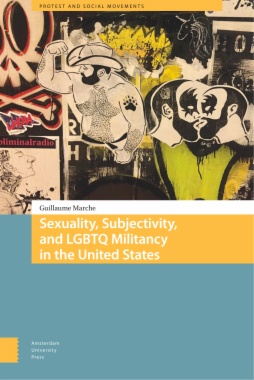As LGBTQ movements in Western Europe, North America, and other regions of the world are becoming increasingly successful at awarding LGBTQ people rights, especially institutional recognition for same-sex couples and their families, what becomes of the deeper social transformation that these movements initially aimed to achieve? The United States is in many ways a paradigmatic model for LGBTQ movements in other countries. Sexuality, Subjectivity, and LGBTQ Militancy in the United States focuses on the transformations of the US LGBTQ movement since the 1980s, highlighting the relationship between its institutionalization and the disappearance of sexuality from its most visible claims, so that its growing visibility and legitimation since the 1990s have paradoxically led to a decrease in grassroots militancy. The book examines the issue from the bottom up, identifying the links between the varying importance of sexuality as a movement theme and actors’ mobilization, and enhances the import of subjectivity in militancy. It draws attention to cultural, sometimes infrapolitical, forms of militancy that perpetuate the role of sexuality in LGBTQ militancy.
- Cover
- Contents
- Acknowledgments
- Preface
- 1. Introduction
- Subjectivity, militancy, and political opportunities
- A microsociological approach “from below”
- Why the United States?
- Terminology
- 2. Of Homosexualities and Movements
- The homophile movement
- The gay liberation movement and the eruption of sexuality
- Gay communitarianism and the privatization of sexuality
- The advent of AIDS and the resurgence of activism
- Sexualization and strategic essentialism
- Legitimation, integrationism, and desexualization
- Recognition of marriage and desexualization
- 3. From Fragmentation to Coalescence
- The moral conservatism of the 1980s
- ACT UP: Provocative lesbian and gay activism
- AIDS, lesbianism, and male homosexuality
- Depolarization, appeasement, and assimilationism
- Institutionalization, status, and conduct
- Substantive rights and collective mobilization
- 4. Sexual Fulfillment and Political Disenchantment
- Militant disengagement
- Privatization and commodification
- LGBTQ pride controversies
- An idealized identity
- Authenticity
- Gratification, engagement, and disappointment
- Idealized identity, homogeneity, and AIDS
- Reasons for engagement, reasons for withdrawal
- 5. Sexuality and Empowerment
- Young people’s sexuality
- LGBTQ youth as social actors
- Daring to talk about LGBTQ young people’s sexuality
- Homosociality, desire, and ethnicity/race
- Sexuality and public spaces: Sex Panic!
- Sexuality, intimacy, and empowerment
- Sexualizing lesbianism
- The “doldrums” and abeyance structures
- Refocusing action on pleasure
- 6. Mobilization on the Threshold of the Political
- Guerrilla theater
- Maintaining grassroots activism
- Subaltern action
- Infrapolitics
- An extreme case: The Sisters of Perpetual Indulgence
- Three Sisters
- The significance of insignificance
- 7. Conclusion: Toward New Identity Forms
- A winning movement
- Polymorphic mobilization
- What can we learn from this?
- The Interviewees
- References
- Index

